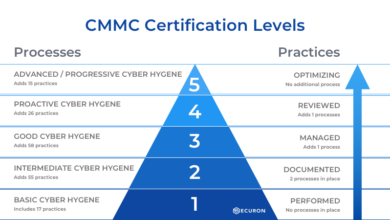7 Amazing Ways of Perfect B2C Marketing Automation
There are a lot of marketing automation tools out there, and they all promise to help you reach your goals. But which ones really deliver?

Let’s face it! There are a lot of marketing automation tools out there, and they all promise to help you reach your goals. But which ones really deliver? To help you decide, we have made a list of inspiring examples of B2C marketing automation that are widely popular. Read on to explore!
1. Newsletters that actually convert
Newsletters build customer connections like nothing else can. In fact, newsletters are a great way to pitch about product sales but in a subtler manner.
This is one of the most customizable marketing tool that you can tailor for your audience—if you’re selling software, don’t send out an email about how to use it if it doesn’t apply to them; instead send something like “How To Use Our Software,” which will help them learn more about what they need from the product.
Another important thing is that newsletters should have a clear call-to-action at the end of each email (e.g., sign up now). This will help drive more sales because people won’t feel like they’re being sold after reading through all those emails!
2. Personalized, engaging emails
Personalized emails connect with your customers at an emotional level. They’re also easier to send and receive, which makes them a great option for B2C marketers who need to automate the delivery of their messages.
You can send personalized emails based on the user’s browsing history. If a user has been shopping at your site recently and then comes back again later in the day, send them an email that asks if they’d like to schedule a call with you about something related just for them. This can be useful for generating leads as well as keeping customers engaged with your product or service—and it’s all done automatically!
3. Nurture campaigns convert potential lead into paying customers
Nurture campaigns play a vital role to convert leads into sales. They’re also an excellent way to improve the quality of your leads, as you can create and nurture them over time.
Nurture campaigns are usually used in B2B marketing automation software, but they can work with any type of marketing automation system or CRM software. You’ll want to create nurturing templates that include questions that will allow your team or salesperson(s) (or whoever is responsible for nurturing) know more about each lead and where they fit into the funnel before moving on with other tasks like closing deals or generating proposals
4. Better chatbot experiences
Chatbots can be used to answer basic questions, make recommendations and send messages. They can also be used to send files and make appointments.
- Answering basic questions: If you have a product or service that isn’t yet ready for the public, but you want to ensure that your target customers are aware of it, then using a chatbot is one way of doing so without creating an experience that doesn’t feel authentic or natural.
- Making recommendations: Another way of using chatbots is by giving them access to information about specific products or services that customers may need help navigating through (for example, if someone asks about getting their finances under control). These bots could then recommend different options based on what they know about each client’s needs—and this saves time because instead of having employees spend hours researching these things themselves; they just use the platform instead!
5. Interactions at scale
When you’re in the B2B space, it’s easy to get bogged down by the sheer volume and variety of interactions your company has with customers. If you have 10,000+ customers and each one sends out an average of 1,000 emails per year (and many send more), that’s 10 million+ messages per day! And while this might seem overwhelming at first glance—especially when compared with the number of emails sent by consumer brands such as Apple or Starbucks—it’s important that we keep in mind how much more efficient B2C companies are when it comes to marketing automation.
The first step towards scaling up your marketing automation strategy especially in the B2C space is identifying which channels work best for different types of interactions with customers: email vs phone calls vs web pages vs social media posts etc. Once these channels have been identified, then it will be easier for us all to move forward together towards higher levels of engagement across multiple channels simultaneously instead of having everything happening separately from each other like before!
6. Personalized landing pages
Landing pages are important because they’re the first impression your visitors will see when they land on your site. They need to be enticing and relevant, but at the same time not too distracting or overwhelming.
While there are plenty of tools out there for creating landing pages, we recommend using marketing automation as a way to create unique landing pages based on customer data you already have access to from email campaigns or other sources (like Facebook ads).
This allows you to test different versions of your page with different messaging and offers so that you can find out which ones get more engagement from potential customers. You can then make adjustments based on what worked best in terms of conversion rates and ROI before moving forward with creating new versions once again!
7. Segmented ads based on interests and behavior
Segmented ads are based on interests and customer behaviors. This cutting-edge marketing-automation technique makes a great way to target your audience by segmenting them. This allows you to use data-driven targeting, which can be very valuable in terms of reaching the right people with the right content at just the right time. For example, if you’re running an email campaign that targets people interested in cooking, then you could create a segment called “Cooking”. This would mean that all emails sent out would be personalized for this group of audiences; they’ll receive only messages relevant to their interests (e.g., recipes).
In addition to this type of personalization being beneficial for B2C marketers looking for repeat purchases or leads from existing customers—it’s also incredibly helpful when it comes down to building relationships with potential customers who aren’t currently partaking in your business’ offerings yet!
Wrapping Up
We hope that these examples have inspired you to think about how your business can use marketing automation to create a better experience for customers. Marketing automation is a powerful tool, but it’s not just about sending out emails–it’s also about creating an ecosystem where every interaction between brand and customer is relevant and meaningful. By leveraging the right tools and making the most of what they offer, you can make sure that every touch point counts toward building long-term relationships with customers who love what they buy from you (and tell everyone else too).




